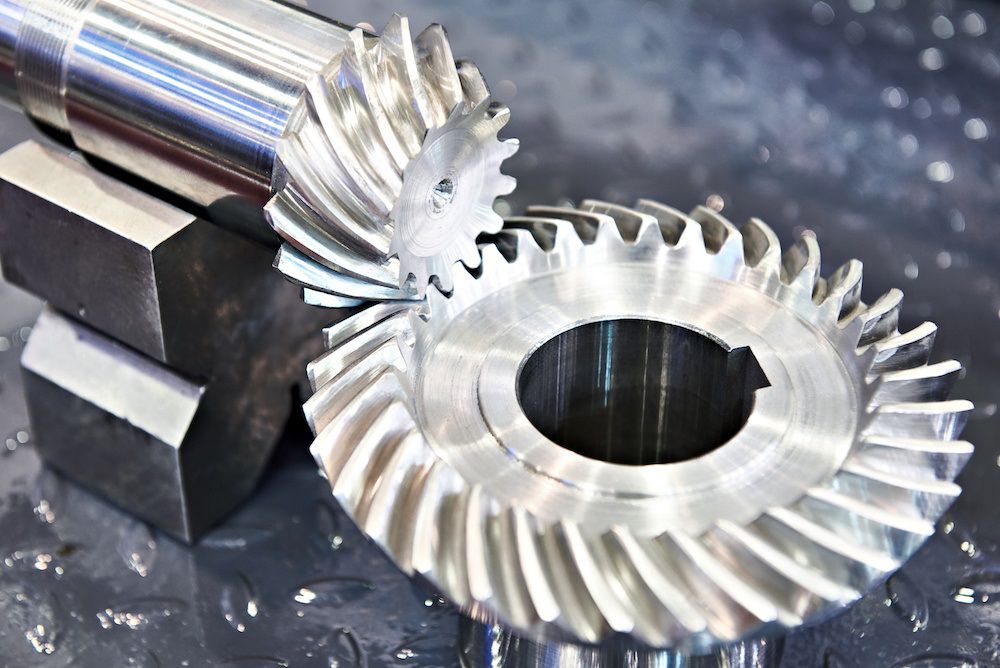They connect intersecting axes and come in several types. The pitch surface of bevel gears is a cone. They are useful when the direction of a shaft’s rotation needs to be changed. Using gears of differing numbers of teeth can change the speed of rotation. They are usually mounted on shafts that are 90 degrees apart, but can be designed to work at other angles as well.
These gears permit minor adjustment during assembly and allow for some displacement due to deflection under operating loads without concentrating the load on the end of the tooth. For reliable performance, Gears must be pinned to shaft with a dowel or taper pin. Bevel gear sets consist of two gears of different pitch diameter that yield ratios greater than 1:1.

Straight bevel gears are the simplest of the bevel gears. They are manufactured on precision generating machines by indexing method ensuring that the teeth should be of tapered depth and thickness. Teeth are cut on the outside of the cone. They have a straight tooth geometry, which if extends, passes through the intersection of their axes.
Straight bevel angle can also be with one gear flat with a pitch angle of 90 degrees. These have conical pith surfaces that operate on intersecting axes. They can be designed and cut to operate on any shaft angle. In straight bevel gears when each tooth engages it impacts the corresponding tooth and simply curving the gear teeth can solve the problem.
Straight bevel gears come in two variations depending on the fabrication equipment. They are grouped into Gleason type and the standard type. Major percentage of them is of Gleason type with a coniflex form that gives almost an imperceptible convex appearance to the tooth surface. In the standard form, the gear has no profile shifted tooth.

These gears are similar to straight bevel gears but the teeth are curved in lengthwise direction. These curved teeth are arranged in such a manner that effective spiral angle is zero.
Spiral Bevel Gear
Spiral bevel gears have spiral angles, which gives performance improvements. They are designed for an angle change of 90 degrees, where the two axes are concurrent and in the same plane. These gears have a double function of being helical and beveled at the same time. The contact between the teeth starts at one end of the gear and then spreads across the whole tooth. In this type of gears the shaft must be perpendicular to each other and must be in the same plane.
They are the most complex forms of bevel gears. The teeth are curved by cutting them obliquely, resulting in higher overall contact ratios. Because of higher contact ratio, these have better load carrying capacity an this allows them to be smaller in size for a given load capacity than an equivalent gear. Thus they can transmit more power with smaller gears.


